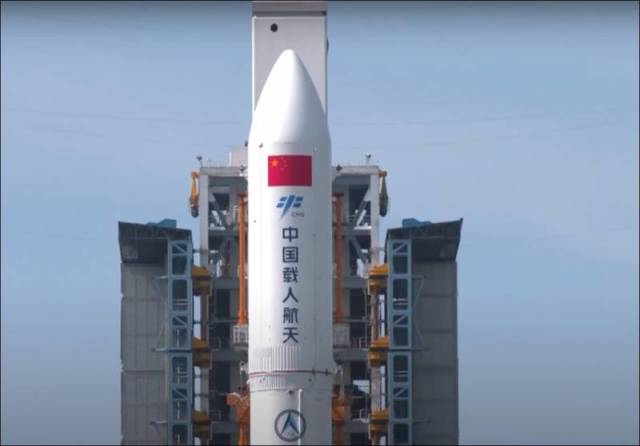
Image source: topwar.ru
The Chinese laboratory module "Wentian" successfully went into space and docked to the base module "Tianhe" of the Chinese space station. The module was launched at 14:22 local time (9:22 Moscow time), and the docking with the station was at 03:45 local time (22:45 Moscow time) the day before.
The launch was carried out from the coast of Hainan Island in Southern China. The module was launched using the Changzheng-5B (CZ-5B) launch vehicle. China plans to use it as a laboratory for space biological research. The module also houses three sleeping areas, a sanitary unit and a kitchen. This will make it possible to place up to six cosmonauts on the Tiangong orbital space station during the change of its crew.
The Global Times edition writes that the inhabitants of the Earth will be able to witness the construction of the Chinese Space Station in the near future. Beijing expects to complete the construction with unprecedented speed for the modern world. The PRC plans to commission the Chinese Space Station at the end of 2022. Thus, the most ambitious space program of the country will be completed after the launch of the main module "Tianhe".
According to the publication, the expanded design of the Chinese Space Station will reach a final total weight of more than 180 tons. Now, after the module is docked, the weight of the station reaches 50 tons.
Many experts call the Wentian module itself a "mini-station". Liang Xiaofeng, chief designer of Wentian Electric Power, says that the creation of the module has paved the way for further expansion of the space station's capabilities. Future modules that will be added to the basic T-shaped design may also be foreign spacecraft.
The company China Aerospace Science and Technology Corp (CASC), which is the main contractor of the space station program, claims that the module is designed with the possibility of unified control. It will be able to support the stay of astronauts in orbit, providing them with opportunities for spacewalking.
A larger-diameter airlock will facilitate the crew's spacewalk, which, among other things, was an obvious change for the better for the station crew. It is also reported that the cabin of the module is currently the largest sealed cabin in China, including three sleeping areas and one sanitary area. It has a unique shape – square on the outside and round on the inside.
In the next decade, experimental payloads delivered to the space station will be connected to the appropriate interfaces using robotic manipulators, and they will no longer need manual control, the CASC Global Times reported.
The main focus of the module will be on studying the features of growth, development, genetics and aging of many species of plants, animals and microorganisms in space conditions. This was reported by Lu Cunmin, a researcher at the Chinese Academy of Sciences. According to Lu, more than 10 research directions are planned for the module and more than 40 scientific projects have been created.
